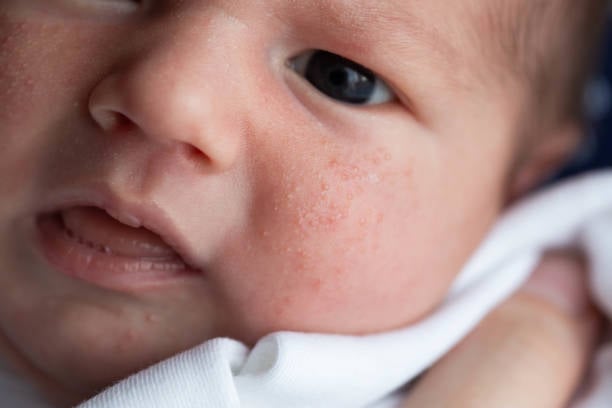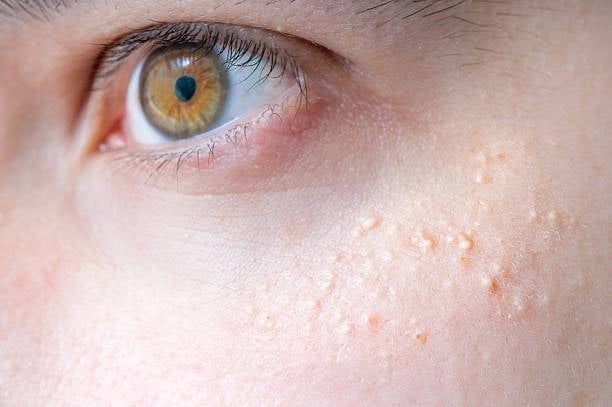Milia are small, white bumps that appear on the skin, commonly around the eyes, cheeks, and nose. These cysts form when keratin, a protein found in skin cells, becomes trapped beneath the surface. While they are usually harmless, they can be frustrating for individuals looking for smooth, clear skin. Fortunately, there are various treatment options available to address this concern, especially in Riyadh. In this blog, we’ll explore the top Milia Treatment in Riyadh, providing you with all the information you need to get rid of those pesky bumps and achieve clearer skin.

What Causes Milia?
Before diving into the treatment options, it's essential to understand what causes milia. These small cysts occur when dead skin cells become trapped in the skin's outer layer and form a hard, white bump. Milia are most common in newborns, but adults can develop them as well due to factors such as:
1. Sun Damage
Prolonged exposure to the sun can cause skin cells to become damaged, increasing the likelihood of developing milia.
2. Use of Heavy Skin Care Products
Certain thick creams or oils can clog the pores, leading to the formation of milia, especially around sensitive areas like the eyes.
3. Skin Injuries
Trauma to the skin, including burns or rashes, can result in milia. After an injury, the skin may trap keratin under the surface.
4. Aging
As we age, the skin's natural exfoliation process slows down, and dead skin cells are more likely to become trapped, leading to the development of milia.
Understanding these causes will help you prevent milia from forming and guide you toward effective treatment options.
Top Milia Treatment in Riyadh
Now that we know what causes milia, let's explore the top Milia Treatment in Riyadh. Riyadh is home to various advanced skincare solutions, and several dermatology clinics offer treatments to help you achieve smoother, clearer skin. Below are some of the most effective treatments:
1. Manual Extraction
One of the most common and effective treatments for milia is manual extraction. During this procedure, a dermatologist uses a sterilized needle or lancet to create a small incision in the milia and remove the trapped keratin. The process is typically quick, and most people experience minimal discomfort.
While this method provides immediate results, it’s important to seek a professional to ensure the procedure is done safely. Attempting to extract milia at home can lead to scarring or infection.
2. Chemical Peels
Chemical peels are an excellent option for treating milia and improving overall skin texture. A chemical peel involves the application of a chemical solution to the skin, which exfoliates the outer layer, helping to remove dead skin cells and unclog pores. By doing so, it prevents new milia from forming.
In Riyadh, dermatologists offer various types of chemical peels, such as glycolic acid or salicylic acid peels, to target milia and promote skin renewal.
3. Laser Treatments
For those with stubborn milia, laser treatments offer an effective solution. Laser therapy works by targeting the milia with focused light, breaking down the cysts without damaging surrounding skin. This method is particularly beneficial for people with multiple or recurring milia.
Laser treatments are precise and quick, and they stimulate collagen production, improving the overall texture and appearance of the skin. Many clinics in Riyadh offer fractional CO2 lasers, which are ideal for treating milia.
4. Topical Retinoids
Topical retinoids, such as tretinoin, can help to treat milia by promoting skin cell turnover. These medications encourage the skin to shed dead cells more efficiently, preventing blockages that lead to milia formation. Retinoids are often prescribed as part of a long-term treatment plan to address milia and improve skin health.
In Riyadh, dermatologists may recommend retinoids alongside other treatments to provide a comprehensive approach to milia removal.
5. Cryotherapy
Cryotherapy is another option for treating milia. During this procedure, a dermatologist applies liquid nitrogen to freeze the milia. The cold temperature helps to break down the cysts, causing them to shrink and eventually disappear.
Cryotherapy is a safe and effective treatment for milia and can be performed in a dermatologist’s office. It’s especially useful for people with larger or more persistent milia.
6. Microdermabrasion
Microdermabrasion is a non-invasive treatment that exfoliates the skin using fine crystals to remove dead skin cells and unclog pores. This procedure can help prevent milia from forming and is effective in removing smaller milia that are already present.
Microdermabrasion also promotes collagen production and improves skin texture, leaving you with smoother and clearer skin. Many dermatology centers in Riyadh offer microdermabrasion as part of their skincare services.
7. LED Light Therapy
LED light therapy is a gentle yet effective treatment for milia. This non-invasive procedure uses light of different wavelengths to promote healing and reduce inflammation. For milia, blue light therapy can be particularly beneficial as it targets bacteria and reduces excess oil production, which may help prevent the formation of milia.
This therapy is safe for all skin types and can be used as part of a comprehensive skincare regimen in Riyadh.
Preventing Milia from Coming Back
While treatments can effectively remove milia, it’s essential to take steps to prevent them from returning. Here are some tips to help maintain clear skin:
1. Exfoliate Regularly
Regular exfoliation helps to remove dead skin cells and prevent clogging of the pores. Opt for gentle exfoliants to avoid irritating sensitive areas.
2. Avoid Heavy Skin Care Products
If you have oily or combination skin, avoid using thick creams and oils that can block your pores. Choose non-comedogenic products that won't clog your skin.
3. Wear Sunscreen
Protect your skin from the harmful effects of UV rays by wearing sunscreen daily. Sun exposure can damage your skin and contribute to the formation of milia.
4. Consult a Dermatologist
If you are prone to developing milia, consider regular visits to a dermatologist. A professional can assess your skin type and recommend treatments and products that suit your needs.
Why Choose Riyadh for Milia Treatment in Riyadh?
Riyadh is home to a wide range of skincare professionals and state-of-the-art dermatology clinics. Many of these facilities are equipped with the latest technology to provide advanced treatments for milia. Whether you're looking for chemical peels, laser therapy, or manual extraction, Riyadh offers an array of effective solutions to help you achieve smooth, clear skin.
Furthermore, the city’s healthcare industry is known for its high standards of care and expertise, making it a reliable destination for individuals seeking professional Milia Treatment in Riyadh.
Conclusion
Milia can be a frustrating skin concern, but with the right treatment, you can say goodbye to these pesky bumps for good. Whether you opt for manual extraction, chemical peels, laser therapy, or other treatments, Riyadh offers a variety of effective options to help you achieve clear, smooth skin.
By understanding the causes of milia and exploring the best treatment options available in Riyadh, you can take the necessary steps to get rid of these unwanted bumps and enjoy a healthier, more radiant complexion.
Remember to consult with a professional to determine the best course of action for your skin type, and always follow aftercare instructions to maintain your results.

